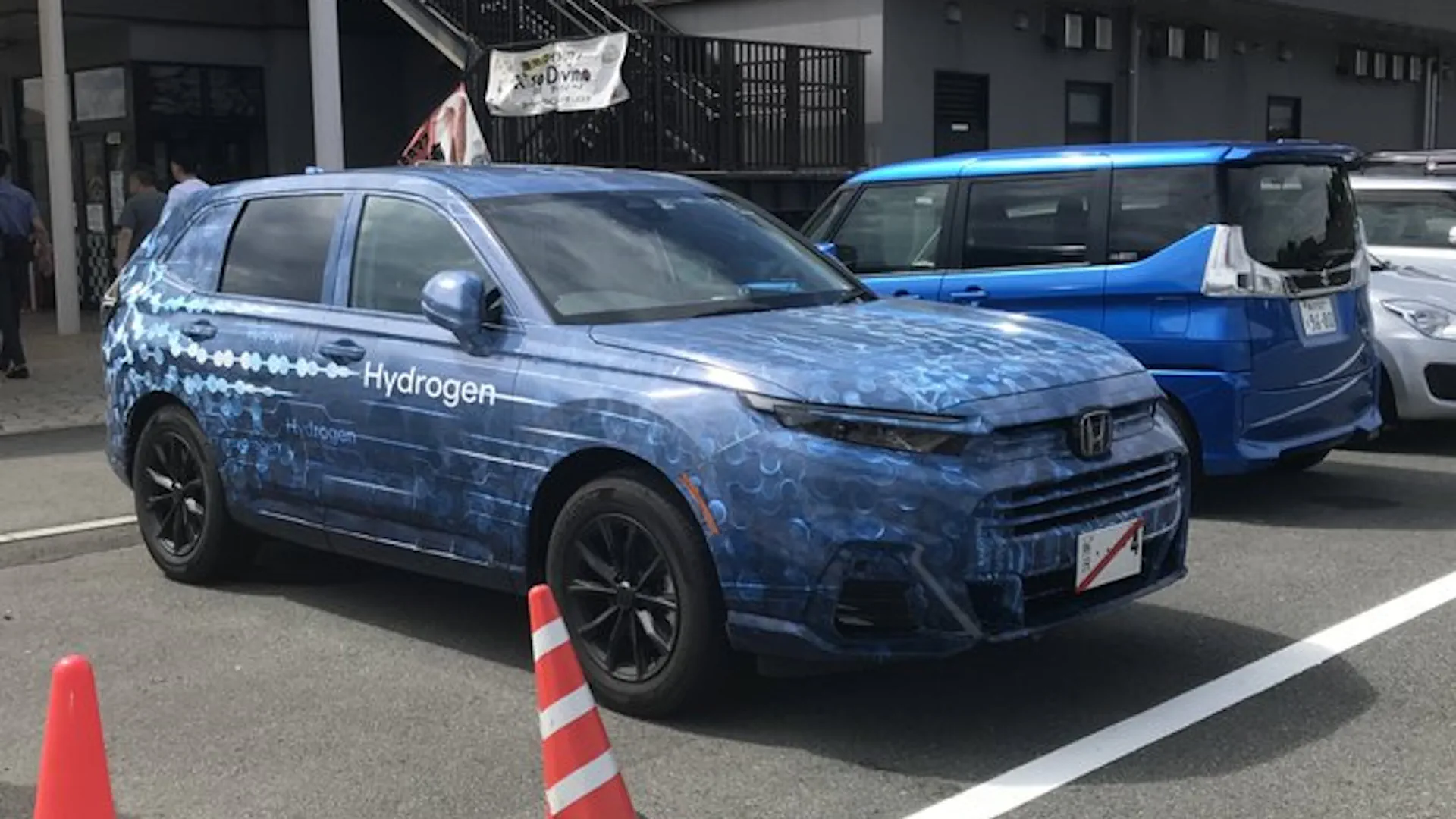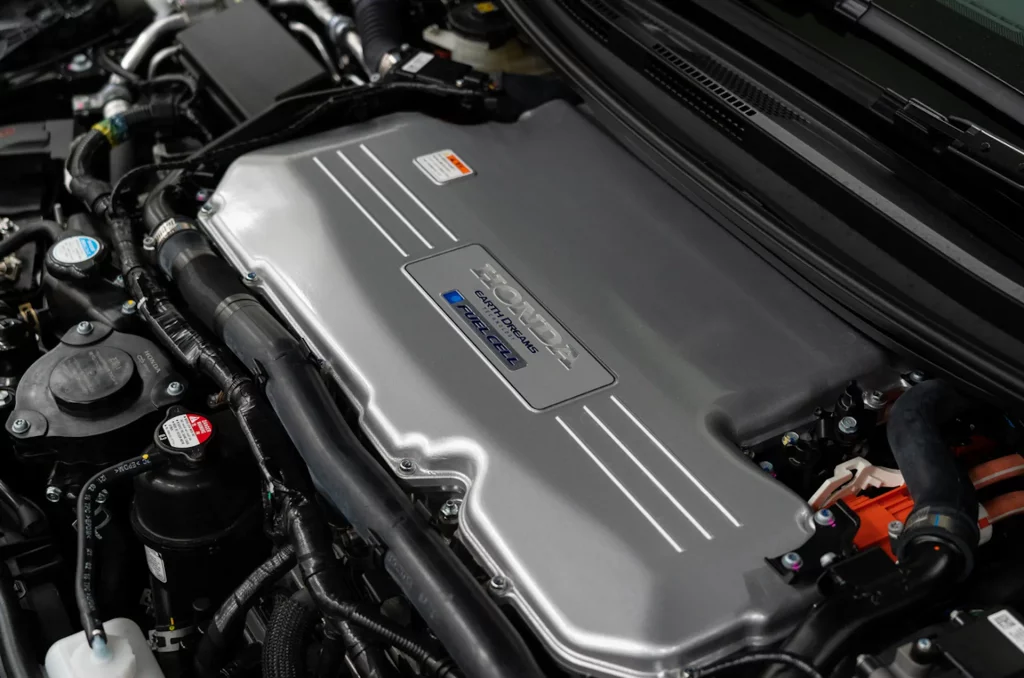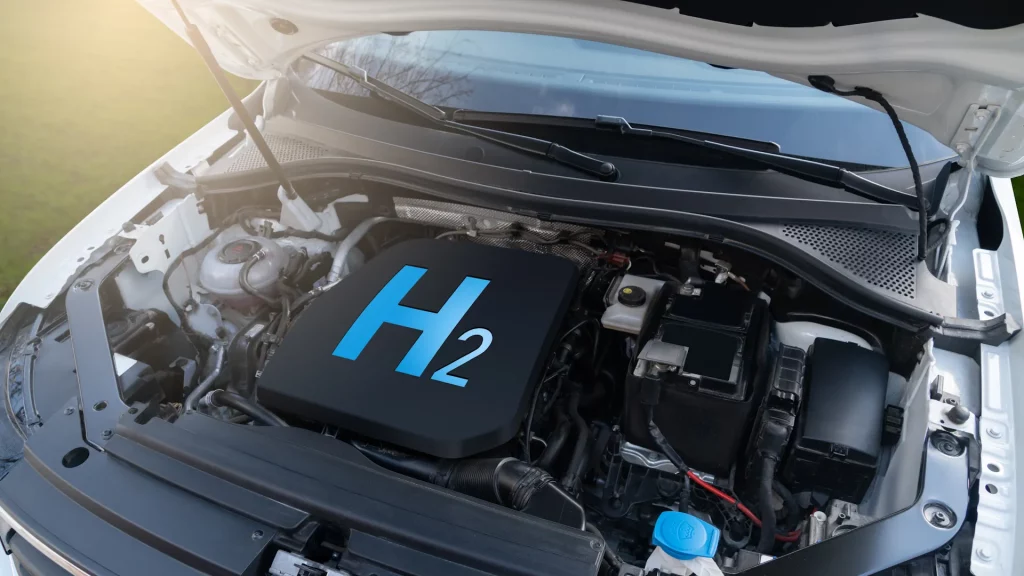
Honda CR-V SUV with hydrogen fuel cells – an alternative in the electric vehicle market
It has not been long since the representatives of the Honda company officially spoke about the company's ambitions in terms of the new development of driving and driving fuel for some of its models, and in question is hydrogen peroxide, also known in English as hydrogen (hydrogen) which comes from the Latin name hydrogenium. The company is still ambitious, and we will see the first tests on the Honda CR-V SUV with fuel cells, which should be released in the middle of this year.
One camouflaged prototype of this Honda SUV was “caught” on camera in a parking lot in Japan, while the other, only in white “camouflage”, was photographed while driving on the highway in Los Angeles.
We can safely say camouflaged, because the car that was spotted in Japan practically had a light blue camouflage wrap around it, it can be seen in the pictures that were published by Twitter (X) accounts back in September @TW91161 i @kitaeri_skyline.
This vehicle is the size of standard Honda CR-V models and is finished in metallic blue, the front of which is significantly different from the current model. It features large corner vents with a split grille design that features a bold Honda emblem.
The back of the car is also slightly different from the current models, which can be noticed through the lack of classic exhaust openings. This is exactly one of the indicators that it is a vehicle with fuel cells, and besides, the word hydrogen is written on the sides of the body.
In addition to the mentioned, there is also a profile with a name @cronchylettuce on the social network X also took pictures of Honda's test model in California, but his pictures show the car on the open road and are not exactly close-ups. However, his pictures show that it is practically the same vehicle, with a different “mask”, but the same front part with a split grille.
Hydrogen fuel cells and hydrogen as propellant
The term “fuel cell” may not be completely familiar to the general public, considering that many people often confuse it with the concept of hydrogen as a propellant for internal combustion engines (ICEs).
 Honda
HondaFuel cells are actually galvanic cells that produce electricity, which is then released by the chemical reaction of the fuel, in this case hydrogen peroxide (H202). Based on this process, hydrogen atoms are released and then serve as fuel for the production of electricity, which then drives the car through an electric motor. As a byproduct of this reaction, pure oxygen (O2) and water are released into the atmosphere via exhaust systems, instead of carbon dioxide from the fossil fuels used by cars.
When it comes to hydrogen as a propellant for SUS engines, this idea was launched at the end of the 19th century and was the first choice of propellant, because gasoline was too unstable to use. However, all that changed with the invention of the carburetor, an early form of fuel injection. The use of gasoline then became safer, because the appropriate ratio of air and fuel was achieved as a mixture that was injected into the engine cylinders.
 Shutterstock
ShutterstockOne hundred years later, in the present, we are returning to the idea of using hydrogen as a fuel, primarily because of energy efficiency (which is low when using fossil fuels, gasoline and diesel). Also, one of the factors of the auto industry's growing interest in hydrogen fuels is the protection of nature, which is visibly polluted by the use of fossil fuels.
Hydrogen as an alternative is attracting increasing public attention, in large part because it can be used in the use of SUS engines. The advantages are as follows:
- emission of oxygen and water into the atmosphere (instead of carbon compounds)
- a mixture of air and hydrogen ignites more easily
- it can burn efficiently even when the mixture is leaner
- hydrogen has a higher diffusivity (expands and mixes with air faster than gasoline)
Here, of course, we can take into account the fact that the space agency NASA puts hydrogen as the first choice when it comes to rocket fuel.
 Shutterstock
ShutterstockHowever, as with all novelties in the auto industry, here too we have “hidden” problems and flaws. According to Jason Fenske of Engineering Explained, there are several drawbacks and obstacles to SUS hydrogen-based engines.
Some of them are:
- the mixture of hydrogen and air produces an emission in the form of H2O (water), but due to the high temperature generated in the chambers, nitrogen oxides are still formed as a by-product
- SUS hydrogen engines have a low energy density in relation to volume, which means that large volume tanks are needed, which automatically means greater weight of the vehicle itself and lack of comfort.
- hydrogen is twice as expensive as gasoline
On the other hand, the rockets used by NASA have huge tanks and the hydrogen-based technology works perfectly. However, when it comes to small engines used by cars and trucks, it is currently not possible to achieve a high energy-efficient level.
Honda CR-V SUV with hydrogen fuel cells
It's worth noting that while we're currently labeling this vehicle as the CR-V, that may not be its real name. When Honda announced plans to produce a fuel cell SUV, it looked like it was actually talking about a model based on the CR-V (Comfortable Runabout Vehicle) design. This became clear later, especially when the prototype car was seen in public, because in profile it looks just like the CR-V, and it matches that design in terms of size.
Moreover, this electric SUV will not simply run on hydrogen. Honda has stated that its new fuel cell will have the ability to plug in to charge the battery like a traditional electric vehicle (EV). The size, capacity and range of the battery are still unknown, but in theory it will help curb “hydrogen anxiety” in a world where there is virtually no hydrogen refueling infrastructure and the high cost of building it.
 Twitter (X) nalog: @cronchylettuce
Twitter (X) nalog: @cronchylettuce Twitter (X) nalog: @cronchylettuce
Twitter (X) nalog: @cronchylettuceRegardless of all the above, Honda is still making progress in the world of hydrogen. The fuel cell for the CR-V has twice the durability at one-third the cost of the system used on the Clarity, which launched in 2017 and will be discontinued in 2021. The reasons for withdrawing from the market were precisely the lack of hydrogen gas stations, the low market demand for fuel cell vehicles as well as the lack of government subsidies for fuel cell vehicles. The mentioned Clarity model is the successor of the FCX model, which was created twenty years ago, and was the first commercial Honda hydrogen model.
The headquarters of the company has not announced exactly when in 2024 the production of fuel cells for the CR-V model will begin. It is only known that it will be in Ohio, America, in the center for the production of high-performance vehicles that was opened in 2016, where the models of the company Honda Acura NSX, Acura PMC Edition as well as Honda Performance Development racing cars are produced.
This model, currently known as the Honda CR-V SUV with hydrogen fuel cells, will initially be sold in Japan and North America, according to Motor1.com.